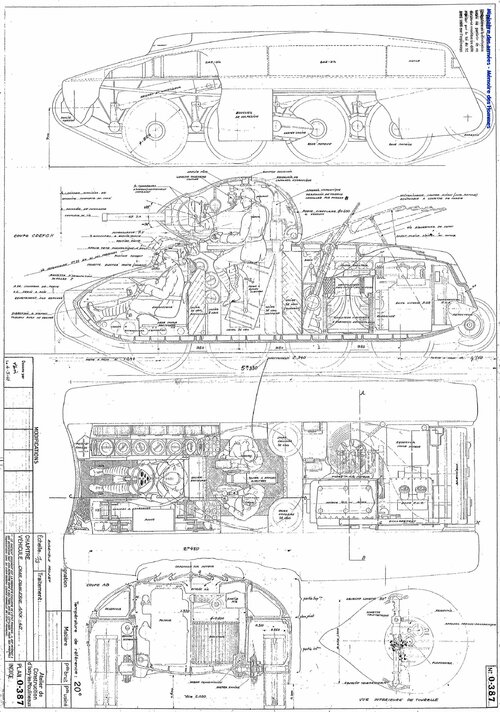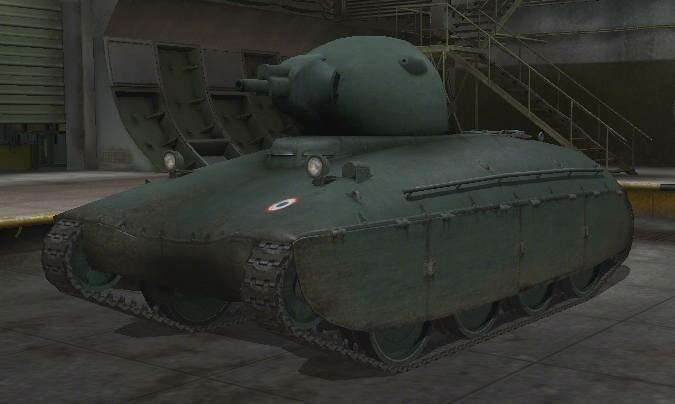Elan Vital
ACCESS: Secret
- Joined
- 6 September 2019
- Messages
- 333
- Reaction score
- 761
Hi everyone,
This thread will be dedicated to the discussion of French cavalry vehicles in the intended 1940-1942 period, namely:
- AM 39 Gendron-Somua
- Laffly heavy/powerful armored car
- Bucciali heavy/powerful armored car
- AMX-40 heavy/powerful armored car
- late Panhard AMD 178 derivatives
- Panhard AM 201 and AM 40P heavy/powerful armored car
- VPRC Bernard TT4 protected cavalry supply vehicle
- and possibly others...
Not the Somua S40 and derivatives, that will be for a thread I already created before.
Considering many of the entries here share a similar origin and historical context, I will start with that in the first post.
Context:
This thread will be dedicated to the discussion of French cavalry vehicles in the intended 1940-1942 period, namely:
- AM 39 Gendron-Somua
- Laffly heavy/powerful armored car
- Bucciali heavy/powerful armored car
- AMX-40 heavy/powerful armored car
- late Panhard AMD 178 derivatives
- Panhard AM 201 and AM 40P heavy/powerful armored car
- VPRC Bernard TT4 protected cavalry supply vehicle
- and possibly others...
Not the Somua S40 and derivatives, that will be for a thread I already created before.
Considering many of the entries here share a similar origin and historical context, I will start with that in the first post.
Context:
Prior to 1937, the armored cars had been divided into three categories:
- AMR: Automitrailleuse de Reconnaissance, lightly armed but mobile recon vehicles of very small size and weight.
- AMD: Automitrailleuse de Découverte, heavier scout cars with relatively heavy armament and meant to recon more deeply into the enemy lines.
- AMC: Automitrailleuse de Combat, a name chosen to circumvent the monopoly of the Infantry on the "Char" name, they were tanks in all but name.
All of these categories could accept either wheeled or tracked options. Other than the AMC class which grew to carry 20 to 25, 30 and finally 40mm of armor, all were only armored against rifle caliber bullets.
Things started changing in 1937 with an unsollicited proposal from Mr. Buccialli for a heavily armed and armored wheeled combat car. This grew into a February 1938 specification for a "powerful" armored car, initially meant to carry 40mm of armor and a 37mm SA38 gun within about 11 tonnes. This specification was amended numerous times, culminating at a 47mm (allegedly SA35) main armament and up to 60mm of armor basis, possibly as low as 9 tonnes.
This specification was tied to a progressive change in thinking within the French military, which was further vindicated by examination of the Polish campaign in 1939. It was concluded that simple bulletproof protection was no longer sufficient for a recon vehicle, hence the 40mm or 60mm of armor. It was also deemed that the entire AMR and AMD classes could be replaced with a single "AM" armored car embodying heavy armor and decent armament. The AMC designation had de facto been superseded by the designation of "Char". Vehicles developped for this specification were the Buccialli and Laffly armored cars, the former being deemed too risky and the latter too conservative. In the end, it is the innovative Panhard proposal which was selected, initially in a non-compliant configuration as the AM 40P.
As for the AM 39 Gendron-Somua, it was a late entry in the old AMR program which proved sufficiently interesting to warrant further development and a production order for 150 to be delivered starting from the second half of 1940. However, it was still doomed and was not meant to continue in production beyond that number. The AMD 178 was similarly doomed, as of mid-1940.
- AMR: Automitrailleuse de Reconnaissance, lightly armed but mobile recon vehicles of very small size and weight.
- AMD: Automitrailleuse de Découverte, heavier scout cars with relatively heavy armament and meant to recon more deeply into the enemy lines.
- AMC: Automitrailleuse de Combat, a name chosen to circumvent the monopoly of the Infantry on the "Char" name, they were tanks in all but name.
All of these categories could accept either wheeled or tracked options. Other than the AMC class which grew to carry 20 to 25, 30 and finally 40mm of armor, all were only armored against rifle caliber bullets.
Things started changing in 1937 with an unsollicited proposal from Mr. Buccialli for a heavily armed and armored wheeled combat car. This grew into a February 1938 specification for a "powerful" armored car, initially meant to carry 40mm of armor and a 37mm SA38 gun within about 11 tonnes. This specification was amended numerous times, culminating at a 47mm (allegedly SA35) main armament and up to 60mm of armor basis, possibly as low as 9 tonnes.
This specification was tied to a progressive change in thinking within the French military, which was further vindicated by examination of the Polish campaign in 1939. It was concluded that simple bulletproof protection was no longer sufficient for a recon vehicle, hence the 40mm or 60mm of armor. It was also deemed that the entire AMR and AMD classes could be replaced with a single "AM" armored car embodying heavy armor and decent armament. The AMC designation had de facto been superseded by the designation of "Char". Vehicles developped for this specification were the Buccialli and Laffly armored cars, the former being deemed too risky and the latter too conservative. In the end, it is the innovative Panhard proposal which was selected, initially in a non-compliant configuration as the AM 40P.
As for the AM 39 Gendron-Somua, it was a late entry in the old AMR program which proved sufficiently interesting to warrant further development and a production order for 150 to be delivered starting from the second half of 1940. However, it was still doomed and was not meant to continue in production beyond that number. The AMD 178 was similarly doomed, as of mid-1940.


